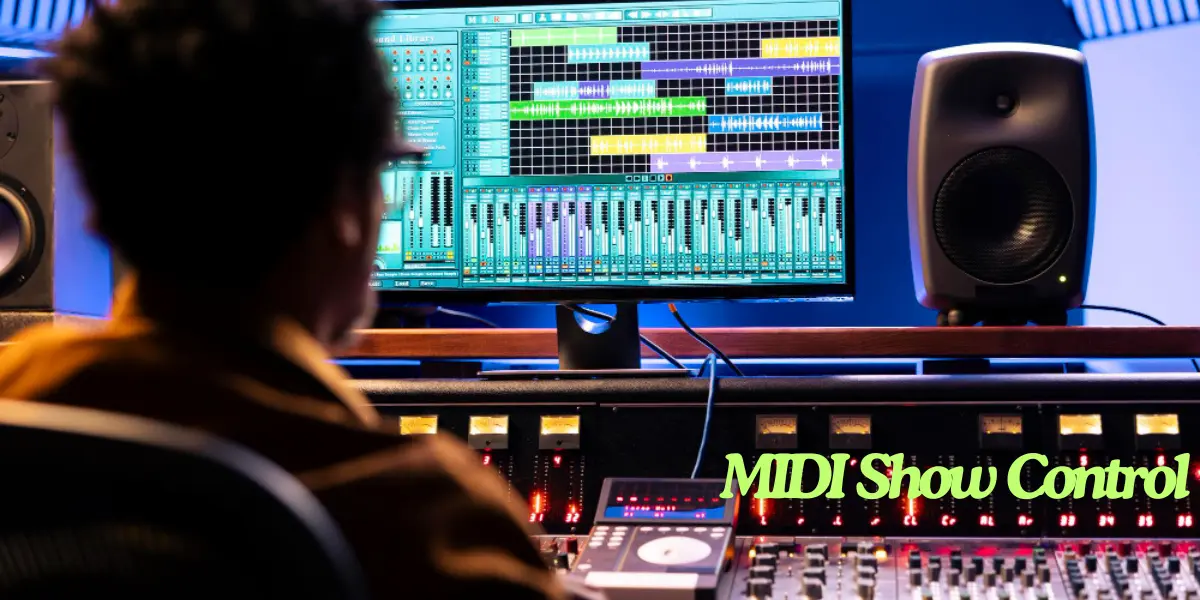MIDI Show Control (MSC) is a powerful protocol that enables seamless communication between various multimedia devices, making it a cornerstone of modern entertainment productions. This article delves into the intricacies of MSC, offering a comprehensive guide for professionals who want to leverage this technology to its fullest potential. From understanding the basics to exploring advanced applications, we cover everything you need to know to master MIDI Show Control.
What is MIDI Show Control?
MIDI Show Control, an extension of the MIDI (Musical Instrument Digital Interface) protocol, is specifically designed for live performance settings. Unlike traditional MIDI, which focuses on musical data, MSC facilitates the control of lighting, audio, video, and other stage effects. It enables devices from different manufacturers to communicate and work together seamlessly, providing a unified and efficient way to manage complex shows.
The Evolution of MSC
The origins of MSC can be traced back to the 1980s when the need for a standardized protocol for live performance control became evident. As multimedia shows became more sophisticated, the limitations of existing control systems became apparent. MSC was developed to address these challenges, providing a universal language for show control. Today, it is an industry-standard used in theater, concerts, and other live events.
How MIDI Show Control Works
At its core, MIDI Show Control is a command-based system. It sends specific commands to devices, instructing them to perform certain actions. For example, a command can cue a lighting change, trigger a sound effect, or start a video playback. These commands are organized into a show control universe, allowing for precise coordination across different devices.
The Command Structure
MSC commands are structured with various elements, including the device ID, command format, and data fields. The device ID identifies the target device, while the command format specifies the type of command being sent. The data fields provide additional information, such as the cue number or parameter values. This structured approach ensures that each command is unambiguous, reducing the risk of errors during live performances.
Benefits of Using MIDI Show Control
Seamless Integration
One of the most significant advantages of MSC is its ability to integrate various multimedia devices into a cohesive system. Whether you’re controlling lighting, audio, or special effects, MSC provides a unified platform that simplifies the management of complex shows. This integration not only improves efficiency but also enhances the overall quality of the production.
Precision and Flexibility
MSC offers unparalleled precision and flexibility. With its command-based structure, it allows for exact timing and control over every aspect of a show. This precision is crucial for ensuring that all elements work together harmoniously. Additionally, MSC’s flexibility enables quick adjustments and modifications, making it ideal for dynamic and evolving productions.
Scalability
Another key benefit of MSC is its scalability. Whether you’re working on a small theatrical production or a large-scale concert, MSC can accommodate a wide range of setups. Its ability to handle multiple devices and complex cue structures makes it a versatile choice for productions of any size.
Advanced Applications of MIDI Show Control
Integration with Other Protocols
MSC can be integrated with other protocols, such as DMX and OSC, to create a comprehensive show control system. For example, MSC can be used to trigger DMX lighting cues or send OSC messages to control software applications. This interoperability extends the capabilities of MSC, allowing for even more sophisticated control scenarios.
Automated Show Control
With the rise of automation in live performances, MSC has become a crucial tool for automated show control. By using MSC, operators can pre-program cues and sequences, allowing for fully automated shows. This not only reduces the need for manual intervention but also ensures consistency and reliability, particularly in complex productions.
Remote Control and Monitoring
MSC also supports remote control and monitoring, enabling operators to manage shows from a distance. This feature is particularly useful in large venues or multi-location events, where on-site control may not be feasible. Remote monitoring capabilities also allow for real-time adjustments, ensuring that everything runs smoothly, even when unforeseen issues arise.
Setting Up MIDI Show Control
Choosing the Right Hardware and Software
To set up an MSC system, you’ll need compatible hardware and software. Key components include a MIDI interface, control software, and compatible devices. When choosing these components, it’s essential to ensure compatibility and reliability. High-quality hardware and software not only improve performance but also reduce the risk of technical issues during live shows.
Configuring the System
Once you’ve chosen the right components, the next step is to configure your system. This involves setting up the MIDI network, assigning device IDs, and configuring control software. Proper configuration is crucial for ensuring that all devices communicate effectively and that commands are executed accurately.
Testing and Troubleshooting
Before going live, it’s essential to test your MSC setup thoroughly. This includes running through all cues and sequences, checking for any issues, and making necessary adjustments. It’s also a good idea to have a troubleshooting plan in place in case of unexpected problems. This plan should include backup solutions and procedures for quickly resolving issues.
Best Practices for Using MIDI Show Control
Documentation and Cue Sheets
One of the best practices for using MSC is to maintain comprehensive documentation and cue sheets. These documents provide a detailed overview of the show’s structure, including all commands and their timing. Well-organized documentation not only helps with planning and execution but also serves as a valuable reference for future shows.
Regular Maintenance and Updates
Like any technology, MSC systems require regular maintenance and updates. This includes updating software, checking hardware for wear and tear, and ensuring that all components are in good working condition. Regular maintenance helps prevent technical issues and ensures that the system remains reliable over time.
Training and Skill Development
Finally, investing in training and skill development is essential for getting the most out of MSC. This includes training operators on the proper use of MSC, as well as keeping up with the latest advancements in the field. A well-trained team is crucial for ensuring that the system is used effectively and that shows are executed flawlessly.
Conclusion
MIDI Show Control is a powerful and versatile tool that has revolutionized the way live performances are managed. Its ability to integrate various multimedia devices, offer precision control, and scale to different production sizes makes it an invaluable asset for professionals in the entertainment industry. By understanding the fundamentals of MSC and following best practices, you can master this technology and elevate the quality of your productions.
Read our more Blogs…


